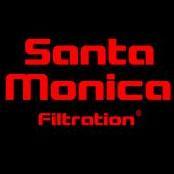Mega Powerful Nitrate and Phosphate Remover - DIY!
-
Topics
-
Latest Update
-
0
美国大学文凭(Q#微信956290760)办理美国犹他大学毕业证成绩单学历认证,留信认证,病假条,OFFER,海牙认证,挂i20,身份转换,转学分,电子成绩单,学校原版文凭OFFERUniversity of Utah
美国大学文凭(Q#微信956290760)办理美国犹他大学毕业证成绩单学历认证,留信认证,病假条,OFFER,海牙认证,挂i20,身份转换,转学分,电子成绩单,学校原版文凭OFFERUniversity of Utah 代办国外学历,国外文凭】加QQ微信:956290760购买国外毕业证、购买成绩单,购买澳洲毕业证、购买美国毕业证、购买加拿大毕业证、购买英国毕业证、购买德国毕业证、购买法国毕业证、 购买新西兰毕业证、办理国外毕业证、办理澳洲毕业证、办理美国毕业证、办理加拿大毕业证、办理英国毕业证、办理德国毕业证、办理法国毕业证、办理新西兰毕业证、 购买国外毕业证、购买澳洲毕业证、购买美国毕业证、购买加拿大毕业证、购买德国毕业证、购买英国毕业证、购买法国毕业证、购买新西兰毕业证、代办国外毕业证、 代办澳洲毕业证、代办美国毕业证、代办加拿大毕业证、代办英国毕业证、代办国外毕业证、代办德国毕业证、代办英国毕业证、代办法国毕业证、代办新西兰毕业证、 办理国外毕业证、办理澳洲毕业证、办理美国毕业证、办理加拿大毕业证、办理英国毕业证、办理法国毕业证、办理新西兰毕业证、办理德国毕业证、制做国外毕业证、 制做美国毕业证、制做澳洲毕业证、制做加拿大毕业证、制做德国毕业证、制做英国毕业证、制做新西兰毕业证、制做法国毕业证、申请国外大学保录取、海外大学申请跨本申硕 一、快速办理高仿材料: 1、毕业证+成绩单+留学回国人员证明+教育部学历认证(全套留学回国必备证明材料,给父母及亲朋好友一份完美交代); 2、雅思、托福,OFFER,在读证明,学生卡等留学相关材料(申请学校、转学,甚至是申请工签都可以用到)。 注:上述高仿材料,随时都可以安排办理,毕业证成绩单,学校,专业,学位,毕业时间都可以根据客户要求安排。 二、毕业证和成绩单办理流程: 1、收集客户办理信息; 2、客户付定金下单; 3、公司确认到账转制作点做电子图; 4、电子图做好发给客户确认; 5、电子图确认好转成品部做成品; 6、成品做好拍照或者视频确认再付余款; 7、快递给客户(国内顺丰,国外DHL)。 三、真实网上可查的证明材料 1、教育部学历学位认证,留服官网真实存档可查,永久存档。 2、留学回国人员证明(使馆认证),使馆网站真实存档可查 3、留信网真实可查文凭认证 四、真实认证办理流程 1、客户提供相关材料,确定客户办理信息,给出最佳操作方案; 2、补充毕业证成绩单等相关材料; 3、留服官网注册申请账号,付定金; 4、预约递交时间,公司人员陪同客户本人一起去留服递交材料; 5、等待结果,完成结果书留服直接邮寄给客户 6、客户确认收到结果,付余款。 五、业务选择办理准则 1、工作未确定回国需先给父母、亲戚朋友看下文凭的情况。办理一份就读学校的毕业证文凭即可 2、回国进私企、外企、自己做生意的情况这些单位是不查询毕业证真伪的而且国内没有渠道去查询国外文凭的真假也不需要提供真实教育部认证。鉴于此办理一份毕业证即可 3、进国企银行事业单位考公务员等等这些单位是必需要提供真实教育部认证的办理教育部认证所需资料众多且烦琐所有材料您都必须提供原件我们凭借丰富的经验快捷的绿色通道帮您快速整合材料让您少走弯路 我们对海外大学及学院的毕业证成绩单所使用的材料,尺寸大小,防伪结构(包括:隐形水印,阴影底纹,钢印LOGO烫金烫银,LOGO烫金烫银复合重叠。 文字图案浮雕,激光镭射,紫外荧光,温感,复印防伪)都有原版本文,凭对照。质量得到了广大海外客户群体的认可,同时和海外学校留学中介, 同时能做到与时俱进,及时掌握各大院校的(毕 业证,成绩单,资格证,学生卡,结业证,录取通知书,在读证明等相关材料)的版本更新信息, 能够在第一时间掌握最新的海外学历文凭的样版,尺寸大小,纸张材质,防伪技术等等,并在第一时间收集到原版 实物,以求达到客户的需求。 我们的优势: [效率优势]保证在约定的时间内完成任务,支持视频语音电话查询完成进度。 [品质优势]与学校颁发的相关证件1:1纸质尺寸制定(定期向各大院校毕业生购买最新版本毕业证成绩单保证您拿到的是学校内部最新版本毕业证成绩单) [保密优势]我们绝不向任何个人或组织泄露您的隐私,致力于在充分保护你隐私的前提下,为您提供更优质的体验和服务。完成交易,删除客户资料 [价格优势]我们在保证合理定价的同时,坚持较高性价比,通过品质和效率不断优化,为您倾情诠释什么是高性价比。 欧洲大学 使馆认证慕尼黑工业大学,哥廷根大学,慕尼黑大学,开姆尼茨工业大学,卡尔斯鲁厄大学,达姆斯塔特工业大学,明斯特大学,弗赖堡大学,多特蒙德工业大学,马堡 大学,杜塞尔多夫大学,波鸿鲁尔大学, 布伦瑞克工业大学,奥格斯堡大学,杜伊斯堡埃森大学,凯撒斯劳滕工业大学,法兰克福大学,亚琛工业大学,斯图加特大学, 汉诺威大学,基尔大学,柏林自由大学,柏林工业大学,吉森大学,纽伦堡大学,莱比锡大学, 美因茨大学,乌尔兹堡大学,萨尔大学,科隆大学,不来梅大学,奥登堡 大学,安哈尔特应用技术大学,波恩大学,勃兰登堡工业大学,德累斯顿工业大学,汉堡大学,柏林洪堡大学,卡塞尔大学,克劳斯塔尔工业大学, 罗斯托克大学,耶拿 应用技术大学,汉堡音乐和戏剧学院,鲁昂大学,克莱蒙费朗一大,克莱蒙费朗第二大学,萨瓦大学,佩皮尼昂大学,南布列塔尼大学,巴黎第一大学,第戎大学,国立 里昂第二大学,格勒诺布尔第三大学 ,凡尔赛大学,巴黎第九大学,马赛大学,昂热大学,贝桑松大学,波城大学,滨海大学,科西嘉大学,尼斯大学,巴黎第八大学, 南锡一大,雷恩一大,巴黎第四大学,卡昂大学,蒙彼利埃三大,蒙彼利埃第一大学, 图尔大学,INSEEC,图卢兹第一大学,图卢兹第三大学,巴黎第四大学索邦大学, 斯特拉斯堡大学,图卢兹三大,波尔多一大,里尔第三大学,里昂三大,奥尔良大学,亚眠大学,罗马二大,米兰大学,马兰欧尼, 办理德国毕业证文凭学历认证成绩单 留学回国证明 英国大学: 办理英国毕业证文凭学历认证成绩单留学回国证明使馆认证纽卡斯尔大学,帝国理工学院,巴斯大学,埃克塞特大学,伦敦大学学院UCL,华威大学,约克大学,兰卡斯特 大学,萨里大学,莱斯特大学, 布里斯托大学,伯明翰大学,格鲁斯特大学,谢菲尔德大学,南安普顿大学,拉夫堡大学,爱丁堡大学,诺丁汉大学,伦敦大学亚非学院 SOAS,格拉斯哥大学,曼彻斯特大学,伦敦国王学院KCL,皇家霍洛威大学RHUL, 阿斯顿大学,利兹大学,萨塞克斯大学,卡迪夫大学,伦敦艺术大学,雷丁大学,肯特 大学,利物浦大学,伦敦玛丽女王学院QMUL,赫瑞瓦特大学,埃塞克斯大学,阿伯丁大学,伦敦城市大学,斯特拉思克莱德大学, 基尔大学,考文垂大学,斯旺西大学, 邓迪大学,阿伯泰大学,切斯特大学,朴茨茅斯大学,威尔士班戈大学,林肯大学,布拉德福德大学,北安普顿大学,诺丁汉特伦特大学,诺森比亚大学,赫尔大学, 约 克圣约翰大学,哈德斯菲尔德大学,伯恩茅斯大学,伦敦商学院大学,罗汉普顿大学,爱丁堡玛格丽特皇后学院,格林威治大学,赫特福德大学,布鲁内尔大学,德蒙福 特大学,罗伯特戈登大学RGU,索尔福德大学, 桑德兰大学,威斯敏斯特大学,南岸大学,圣安德鲁斯大学,普利茅斯大学,牛津布鲁克斯大学,伯明翰城市大学BCU 新西兰大学: where can I get a fake diploma 梅西大学,林肯大学,奥塔哥大学,奥克兰理工大学AUT,怀卡托大学,基督城理工学院CPIT,马努卡理工学院,坎特伯雷大学,奥克兰大学,奥克兰商学院AIS, 悉尼大 学USYD,新南威尔士大学UNSW,查尔斯达尔文大学CDU,澳大利亚联邦大学,斯威本科技大学Swinburne,巴拉瑞特大学ballarat,RMIT,墨尔本大学,阿德莱德大学 Adelaide,莫纳什大学Monash, 昆士兰大学UQ,西澳大学UWA,澳大利亚国立大学ANU,麦考瑞大学Macquarie,纽卡斯尔大学,卧龙岗大学Wollongong,格里菲斯大学 Griffith,弗林德斯大学Flinders,塔斯马尼亚大学UTAS,堪培拉大学, 邦德大学Bond,迪肯大学Deakin,悉尼科技大学UTS,科廷大学Curtin,墨尔本皇家理工学院 RMIT,昆士兰科技大学QUT,拉筹伯大学La Trobe,莫道克大学Murdoch,澳洲TAFE,南澳大学UniSA, 中央昆士兰大学CQU,詹姆斯库克大学JCU,新英格兰大学UNE,南 昆士兰大学USQ,埃迪斯科文大学ECU,南十字星大学SCU,阳光海岸大学,维多利亚大学Victoria,办理澳洲毕业证文凭学历认证成绩单留学回国证明 办理假毕业证在国内能用吗Q\微信956290760挂科拿不到毕业证怎么办Q\微信956290760毕 业证丢了怎么办Q\微信956290760没有正常毕业怎么办理毕业证Q\微信956290760没毕业 办学历认证吗Q\微信956290760您是否因为中途辍学、挂科而没有正常毕业Q\微信956290760您是否因为递交材料不齐而被拒之门外Q\微信956290760您是否因没正常毕业而导致回国得不到 Q\微信956290760在校挂科了不想读了、成绩不理想怎么办Q\微信956290760找工 作没有文凭怎么办Q\微信956290760办理本科/研究生文凭Q\微信956290760有本科却要求硕士又怎么办 Q\微信956290760办理本科/硕士毕业证Q\微信956290760网上买文凭可靠吗Q\微信956290760买国外文凭质量Q\微信 956290760国外本科毕业证怎么办理Q\微信956290760国外大学文凭高仿真制作 Q\微信956290760办国外文凭可找工作Q\微信956290760怎么办理国外假毕业证Q\微信956290760哪里可以制作毕业证Q\微信956290760美国哪里可以办理毕业证Q\微信956290760澳洲 哪里可以办理毕业证Q\微信956290760留学生在哪里买毕业证Q\微信956290760加拿大哪里 可以办理毕业证Q\微信956290760诚信办理毕业证Q\微信956290760申请学校办理成绩单 Q \微信956290760办理水印成绩单Q\微信956290760办理悉尼大学成绩单Q\微信956290760多伦多办理成绩单Q\微信956290760修改成绩单GPAQ\微信956290760修改成绩 单分数 Q\微信956290760办理多大成绩单Q\微信956290760如何拿到国外毕业证Q\微信956290760快速拿到国外文凭Q\微信956290760快速办理国外毕业证Q\微信956290760假毕业证能查出来吗Q\微信956290760假文凭 -
0
美国大学文凭(Q#微信956290760)办理美国南佛罗里达大学USF毕业证成绩单学历认证,留信认证,病假条,OFFER,海牙认证,挂i20,身份转换,转学分,电子成绩单,学校原版文凭OFFERUniversity of south Florida
美国大学文凭(Q#微信956290760)办理美国南佛罗里达大学USF毕业证成绩单学历认证,留信认证,病假条,OFFER,海牙认证,挂i20,身份转换,转学分,电子成绩单,学校原版文凭OFFERUniversity of south Florida 代办国外学历,国外文凭】加QQ微信:956290760购买国外毕业证、购买成绩单,购买澳洲毕业证、购买美国毕业证、购买加拿大毕业证、购买英国毕业证、购买德国毕业证、购买法国毕业证、 购买新西兰毕业证、办理国外毕业证、办理澳洲毕业证、办理美国毕业证、办理加拿大毕业证、办理英国毕业证、办理德国毕业证、办理法国毕业证、办理新西兰毕业证、 购买国外毕业证、购买澳洲毕业证、购买美国毕业证、购买加拿大毕业证、购买德国毕业证、购买英国毕业证、购买法国毕业证、购买新西兰毕业证、代办国外毕业证、 代办澳洲毕业证、代办美国毕业证、代办加拿大毕业证、代办英国毕业证、代办国外毕业证、代办德国毕业证、代办英国毕业证、代办法国毕业证、代办新西兰毕业证、 办理国外毕业证、办理澳洲毕业证、办理美国毕业证、办理加拿大毕业证、办理英国毕业证、办理法国毕业证、办理新西兰毕业证、办理德国毕业证、制做国外毕业证、 制做美国毕业证、制做澳洲毕业证、制做加拿大毕业证、制做德国毕业证、制做英国毕业证、制做新西兰毕业证、制做法国毕业证、申请国外大学保录取、海外大学申请跨本申硕 一、快速办理高仿材料: 1、毕业证+成绩单+留学回国人员证明+教育部学历认证(全套留学回国必备证明材料,给父母及亲朋好友一份完美交代); 2、雅思、托福,OFFER,在读证明,学生卡等留学相关材料(申请学校、转学,甚至是申请工签都可以用到)。 注:上述高仿材料,随时都可以安排办理,毕业证成绩单,学校,专业,学位,毕业时间都可以根据客户要求安排。 二、毕业证和成绩单办理流程: 1、收集客户办理信息; 2、客户付定金下单; 3、公司确认到账转制作点做电子图; 4、电子图做好发给客户确认; 5、电子图确认好转成品部做成品; 6、成品做好拍照或者视频确认再付余款; 7、快递给客户(国内顺丰,国外DHL)。 三、真实网上可查的证明材料 1、教育部学历学位认证,留服官网真实存档可查,永久存档。 2、留学回国人员证明(使馆认证),使馆网站真实存档可查 3、留信网真实可查文凭认证 四、真实认证办理流程 1、客户提供相关材料,确定客户办理信息,给出最佳操作方案; 2、补充毕业证成绩单等相关材料; 3、留服官网注册申请账号,付定金; 4、预约递交时间,公司人员陪同客户本人一起去留服递交材料; 5、等待结果,完成结果书留服直接邮寄给客户 6、客户确认收到结果,付余款。 五、业务选择办理准则 1、工作未确定回国需先给父母、亲戚朋友看下文凭的情况。办理一份就读学校的毕业证文凭即可 2、回国进私企、外企、自己做生意的情况这些单位是不查询毕业证真伪的而且国内没有渠道去查询国外文凭的真假也不需要提供真实教育部认证。鉴于此办理一份毕业证即可 3、进国企银行事业单位考公务员等等这些单位是必需要提供真实教育部认证的办理教育部认证所需资料众多且烦琐所有材料您都必须提供原件我们凭借丰富的经验快捷的绿色通道帮您快速整合材料让您少走弯路 我们对海外大学及学院的毕业证成绩单所使用的材料,尺寸大小,防伪结构(包括:隐形水印,阴影底纹,钢印LOGO烫金烫银,LOGO烫金烫银复合重叠。 文字图案浮雕,激光镭射,紫外荧光,温感,复印防伪)都有原版本文,凭对照。质量得到了广大海外客户群体的认可,同时和海外学校留学中介, 同时能做到与时俱进,及时掌握各大院校的(毕 业证,成绩单,资格证,学生卡,结业证,录取通知书,在读证明等相关材料)的版本更新信息, 能够在第一时间掌握最新的海外学历文凭的样版,尺寸大小,纸张材质,防伪技术等等,并在第一时间收集到原版 实物,以求达到客户的需求。 我们的优势: [效率优势]保证在约定的时间内完成任务,支持视频语音电话查询完成进度。 [品质优势]与学校颁发的相关证件1:1纸质尺寸制定(定期向各大院校毕业生购买最新版本毕业证成绩单保证您拿到的是学校内部最新版本毕业证成绩单) [保密优势]我们绝不向任何个人或组织泄露您的隐私,致力于在充分保护你隐私的前提下,为您提供更优质的体验和服务。完成交易,删除客户资料 [价格优势]我们在保证合理定价的同时,坚持较高性价比,通过品质和效率不断优化,为您倾情诠释什么是高性价比。 欧洲大学 使馆认证慕尼黑工业大学,哥廷根大学,慕尼黑大学,开姆尼茨工业大学,卡尔斯鲁厄大学,达姆斯塔特工业大学,明斯特大学,弗赖堡大学,多特蒙德工业大学,马堡 大学,杜塞尔多夫大学,波鸿鲁尔大学, 布伦瑞克工业大学,奥格斯堡大学,杜伊斯堡埃森大学,凯撒斯劳滕工业大学,法兰克福大学,亚琛工业大学,斯图加特大学, 汉诺威大学,基尔大学,柏林自由大学,柏林工业大学,吉森大学,纽伦堡大学,莱比锡大学, 美因茨大学,乌尔兹堡大学,萨尔大学,科隆大学,不来梅大学,奥登堡 大学,安哈尔特应用技术大学,波恩大学,勃兰登堡工业大学,德累斯顿工业大学,汉堡大学,柏林洪堡大学,卡塞尔大学,克劳斯塔尔工业大学, 罗斯托克大学,耶拿 应用技术大学,汉堡音乐和戏剧学院,鲁昂大学,克莱蒙费朗一大,克莱蒙费朗第二大学,萨瓦大学,佩皮尼昂大学,南布列塔尼大学,巴黎第一大学,第戎大学,国立 里昂第二大学,格勒诺布尔第三大学 ,凡尔赛大学,巴黎第九大学,马赛大学,昂热大学,贝桑松大学,波城大学,滨海大学,科西嘉大学,尼斯大学,巴黎第八大学, 南锡一大,雷恩一大,巴黎第四大学,卡昂大学,蒙彼利埃三大,蒙彼利埃第一大学, 图尔大学,INSEEC,图卢兹第一大学,图卢兹第三大学,巴黎第四大学索邦大学, 斯特拉斯堡大学,图卢兹三大,波尔多一大,里尔第三大学,里昂三大,奥尔良大学,亚眠大学,罗马二大,米兰大学,马兰欧尼, 办理德国毕业证文凭学历认证成绩单 留学回国证明 英国大学: 办理英国毕业证文凭学历认证成绩单留学回国证明使馆认证纽卡斯尔大学,帝国理工学院,巴斯大学,埃克塞特大学,伦敦大学学院UCL,华威大学,约克大学,兰卡斯特 大学,萨里大学,莱斯特大学, 布里斯托大学,伯明翰大学,格鲁斯特大学,谢菲尔德大学,南安普顿大学,拉夫堡大学,爱丁堡大学,诺丁汉大学,伦敦大学亚非学院 SOAS,格拉斯哥大学,曼彻斯特大学,伦敦国王学院KCL,皇家霍洛威大学RHUL, 阿斯顿大学,利兹大学,萨塞克斯大学,卡迪夫大学,伦敦艺术大学,雷丁大学,肯特 大学,利物浦大学,伦敦玛丽女王学院QMUL,赫瑞瓦特大学,埃塞克斯大学,阿伯丁大学,伦敦城市大学,斯特拉思克莱德大学, 基尔大学,考文垂大学,斯旺西大学, 邓迪大学,阿伯泰大学,切斯特大学,朴茨茅斯大学,威尔士班戈大学,林肯大学,布拉德福德大学,北安普顿大学,诺丁汉特伦特大学,诺森比亚大学,赫尔大学, 约 克圣约翰大学,哈德斯菲尔德大学,伯恩茅斯大学,伦敦商学院大学,罗汉普顿大学,爱丁堡玛格丽特皇后学院,格林威治大学,赫特福德大学,布鲁内尔大学,德蒙福 特大学,罗伯特戈登大学RGU,索尔福德大学, 桑德兰大学,威斯敏斯特大学,南岸大学,圣安德鲁斯大学,普利茅斯大学,牛津布鲁克斯大学,伯明翰城市大学BCU 新西兰大学: where can I get a fake diploma 梅西大学,林肯大学,奥塔哥大学,奥克兰理工大学AUT,怀卡托大学,基督城理工学院CPIT,马努卡理工学院,坎特伯雷大学,奥克兰大学,奥克兰商学院AIS, 悉尼大 学USYD,新南威尔士大学UNSW,查尔斯达尔文大学CDU,澳大利亚联邦大学,斯威本科技大学Swinburne,巴拉瑞特大学ballarat,RMIT,墨尔本大学,阿德莱德大学 Adelaide,莫纳什大学Monash, 昆士兰大学UQ,西澳大学UWA,澳大利亚国立大学ANU,麦考瑞大学Macquarie,纽卡斯尔大学,卧龙岗大学Wollongong,格里菲斯大学 Griffith,弗林德斯大学Flinders,塔斯马尼亚大学UTAS,堪培拉大学, 邦德大学Bond,迪肯大学Deakin,悉尼科技大学UTS,科廷大学Curtin,墨尔本皇家理工学院 RMIT,昆士兰科技大学QUT,拉筹伯大学La Trobe,莫道克大学Murdoch,澳洲TAFE,南澳大学UniSA, 中央昆士兰大学CQU,詹姆斯库克大学JCU,新英格兰大学UNE,南 昆士兰大学USQ,埃迪斯科文大学ECU,南十字星大学SCU,阳光海岸大学,维多利亚大学Victoria,办理澳洲毕业证文凭学历认证成绩单留学回国证明 办理假毕业证在国内能用吗Q\微信956290760挂科拿不到毕业证怎么办Q\微信956290760毕 业证丢了怎么办Q\微信956290760没有正常毕业怎么办理毕业证Q\微信956290760没毕业 办学历认证吗Q\微信956290760您是否因为中途辍学、挂科而没有正常毕业Q\微信956290760您是否因为递交材料不齐而被拒之门外Q\微信956290760您是否因没正常毕业而导致回国得不到 Q\微信956290760在校挂科了不想读了、成绩不理想怎么办Q\微信956290760找工 作没有文凭怎么办Q\微信956290760办理本科/研究生文凭Q\微信956290760有本科却要求硕士又怎么办 Q\微信956290760办理本科/硕士毕业证Q\微信956290760网上买文凭可靠吗Q\微信956290760买国外文凭质量Q\微信 956290760国外本科毕业证怎么办理Q\微信956290760国外大学文凭高仿真制作 Q\微信956290760办国外文凭可找工作Q\微信956290760怎么办理国外假毕业证Q\微信956290760哪里可以制作毕业证Q\微信956290760美国哪里可以办理毕业证Q\微信956290760澳洲 哪里可以办理毕业证Q\微信956290760留学生在哪里买毕业证Q\微信956290760加拿大哪里 可以办理毕业证Q\微信956290760诚信办理毕业证Q\微信956290760申请学校办理成绩单 Q \微信956290760办理水印成绩单Q\微信956290760办理悉尼大学成绩单Q\微信956290760多伦多办理成绩单Q\微信956290760修改成绩单GPAQ\微信956290760修改成绩 单分数 Q\微信956290760办理多大成绩单Q\微信956290760如何拿到国外毕业证Q\微信956290760快速拿到国外文凭Q\微信956290760快速办理国外毕业证Q\微信956290760假毕业证能查出来吗Q\微信956290760假文凭 -
0
美国大学文凭(Q#微信956290760)办理美国圣托马斯大学毕业证成绩单学历认证,留信认证,病假条,OFFER,海牙认证,挂i20,身份转换,转学分,电子成绩单,学校原版文凭OFFERUniversity of St. Thomas
代办国外学历,国外文凭】加QQ微信:956290760购买国外毕业证、购买成绩单,购买澳洲毕业证、购买美国毕业证、购买加拿大毕业证、购买英国毕业证、购买德国毕业证、购买法国毕业证、 购买新西兰毕业证、办理国外毕业证、办理澳洲毕业证、办理美国毕业证、办理加拿大毕业证、办理英国毕业证、办理德国毕业证、办理法国毕业证、办理新西兰毕业证、 购买国外毕业证、购买澳洲毕业证、购买美国毕业证、购买加拿大毕业证、购买德国毕业证、购买英国毕业证、购买法国毕业证、购买新西兰毕业证、代办国外毕业证、 代办澳洲毕业证、代办美国毕业证、代办加拿大毕业证、代办英国毕业证、代办国外毕业证、代办德国毕业证、代办英国毕业证、代办法国毕业证、代办新西兰毕业证、 办理国外毕业证、办理澳洲毕业证、办理美国毕业证、办理加拿大毕业证、办理英国毕业证、办理法国毕业证、办理新西兰毕业证、办理德国毕业证、制做国外毕业证、 制做美国毕业证、制做澳洲毕业证、制做加拿大毕业证、制做德国毕业证、制做英国毕业证、制做新西兰毕业证、制做法国毕业证、申请国外大学保录取、海外大学申请跨本申硕 一、快速办理高仿材料: 1、毕业证+成绩单+留学回国人员证明+教育部学历认证(全套留学回国必备证明材料,给父母及亲朋好友一份完美交代); 2、雅思、托福,OFFER,在读证明,学生卡等留学相关材料(申请学校、转学,甚至是申请工签都可以用到)。 注:上述高仿材料,随时都可以安排办理,毕业证成绩单,学校,专业,学位,毕业时间都可以根据客户要求安排。 二、毕业证和成绩单办理流程: 1、收集客户办理信息; 2、客户付定金下单; 3、公司确认到账转制作点做电子图; 4、电子图做好发给客户确认; 5、电子图确认好转成品部做成品; 6、成品做好拍照或者视频确认再付余款; 7、快递给客户(国内顺丰,国外DHL)。 三、真实网上可查的证明材料 1、教育部学历学位认证,留服官网真实存档可查,永久存档。 2、留学回国人员证明(使馆认证),使馆网站真实存档可查 3、留信网真实可查文凭认证 四、真实认证办理流程 1、客户提供相关材料,确定客户办理信息,给出最佳操作方案; 2、补充毕业证成绩单等相关材料; 3、留服官网注册申请账号,付定金; 4、预约递交时间,公司人员陪同客户本人一起去留服递交材料; 5、等待结果,完成结果书留服直接邮寄给客户 6、客户确认收到结果,付余款。 五、业务选择办理准则 1、工作未确定回国需先给父母、亲戚朋友看下文凭的情况。办理一份就读学校的毕业证文凭即可 2、回国进私企、外企、自己做生意的情况这些单位是不查询毕业证真伪的而且国内没有渠道去查询国外文凭的真假也不需要提供真实教育部认证。鉴于此办理一份毕业证即可 3、进国企银行事业单位考公务员等等这些单位是必需要提供真实教育部认证的办理教育部认证所需资料众多且烦琐所有材料您都必须提供原件我们凭借丰富的经验快捷的绿色通道帮您快速整合材料让您少走弯路 我们对海外大学及学院的毕业证成绩单所使用的材料,尺寸大小,防伪结构(包括:隐形水印,阴影底纹,钢印LOGO烫金烫银,LOGO烫金烫银复合重叠。 文字图案浮雕,激光镭射,紫外荧光,温感,复印防伪)都有原版本文,凭对照。质量得到了广大海外客户群体的认可,同时和海外学校留学中介, 同时能做到与时俱进,及时掌握各大院校的(毕 业证,成绩单,资格证,学生卡,结业证,录取通知书,在读证明等相关材料)的版本更新信息, 能够在第一时间掌握最新的海外学历文凭的样版,尺寸大小,纸张材质,防伪技术等等,并在第一时间收集到原版 实物,以求达到客户的需求。 我们的优势: [效率优势]保证在约定的时间内完成任务,支持视频语音电话查询完成进度。 [品质优势]与学校颁发的相关证件1:1纸质尺寸制定(定期向各大院校毕业生购买最新版本毕业证成绩单保证您拿到的是学校内部最新版本毕业证成绩单) [保密优势]我们绝不向任何个人或组织泄露您的隐私,致力于在充分保护你隐私的前提下,为您提供更优质的体验和服务。完成交易,删除客户资料 [价格优势]我们在保证合理定价的同时,坚持较高性价比,通过品质和效率不断优化,为您倾情诠释什么是高性价比。 欧洲大学 使馆认证慕尼黑工业大学,哥廷根大学,慕尼黑大学,开姆尼茨工业大学,卡尔斯鲁厄大学,达姆斯塔特工业大学,明斯特大学,弗赖堡大学,多特蒙德工业大学,马堡 大学,杜塞尔多夫大学,波鸿鲁尔大学, 布伦瑞克工业大学,奥格斯堡大学,杜伊斯堡埃森大学,凯撒斯劳滕工业大学,法兰克福大学,亚琛工业大学,斯图加特大学, 汉诺威大学,基尔大学,柏林自由大学,柏林工业大学,吉森大学,纽伦堡大学,莱比锡大学, 美因茨大学,乌尔兹堡大学,萨尔大学,科隆大学,不来梅大学,奥登堡 大学,安哈尔特应用技术大学,波恩大学,勃兰登堡工业大学,德累斯顿工业大学,汉堡大学,柏林洪堡大学,卡塞尔大学,克劳斯塔尔工业大学, 罗斯托克大学,耶拿 应用技术大学,汉堡音乐和戏剧学院,鲁昂大学,克莱蒙费朗一大,克莱蒙费朗第二大学,萨瓦大学,佩皮尼昂大学,南布列塔尼大学,巴黎第一大学,第戎大学,国立 里昂第二大学,格勒诺布尔第三大学 ,凡尔赛大学,巴黎第九大学,马赛大学,昂热大学,贝桑松大学,波城大学,滨海大学,科西嘉大学,尼斯大学,巴黎第八大学, 南锡一大,雷恩一大,巴黎第四大学,卡昂大学,蒙彼利埃三大,蒙彼利埃第一大学, 图尔大学,INSEEC,图卢兹第一大学,图卢兹第三大学,巴黎第四大学索邦大学, 斯特拉斯堡大学,图卢兹三大,波尔多一大,里尔第三大学,里昂三大,奥尔良大学,亚眠大学,罗马二大,米兰大学,马兰欧尼, 办理德国毕业证文凭学历认证成绩单 留学回国证明 英国大学: 办理英国毕业证文凭学历认证成绩单留学回国证明使馆认证纽卡斯尔大学,帝国理工学院,巴斯大学,埃克塞特大学,伦敦大学学院UCL,华威大学,约克大学,兰卡斯特 大学,萨里大学,莱斯特大学, 布里斯托大学,伯明翰大学,格鲁斯特大学,谢菲尔德大学,南安普顿大学,拉夫堡大学,爱丁堡大学,诺丁汉大学,伦敦大学亚非学院 SOAS,格拉斯哥大学,曼彻斯特大学,伦敦国王学院KCL,皇家霍洛威大学RHUL, 阿斯顿大学,利兹大学,萨塞克斯大学,卡迪夫大学,伦敦艺术大学,雷丁大学,肯特 大学,利物浦大学,伦敦玛丽女王学院QMUL,赫瑞瓦特大学,埃塞克斯大学,阿伯丁大学,伦敦城市大学,斯特拉思克莱德大学, 基尔大学,考文垂大学,斯旺西大学, 邓迪大学,阿伯泰大学,切斯特大学,朴茨茅斯大学,威尔士班戈大学,林肯大学,布拉德福德大学,北安普顿大学,诺丁汉特伦特大学,诺森比亚大学,赫尔大学, 约 克圣约翰大学,哈德斯菲尔德大学,伯恩茅斯大学,伦敦商学院大学,罗汉普顿大学,爱丁堡玛格丽特皇后学院,格林威治大学,赫特福德大学,布鲁内尔大学,德蒙福 特大学,罗伯特戈登大学RGU,索尔福德大学, 桑德兰大学,威斯敏斯特大学,南岸大学,圣安德鲁斯大学,普利茅斯大学,牛津布鲁克斯大学,伯明翰城市大学BCU 新西兰大学: where can I get a fake diploma 梅西大学,林肯大学,奥塔哥大学,奥克兰理工大学AUT,怀卡托大学,基督城理工学院CPIT,马努卡理工学院,坎特伯雷大学,奥克兰大学,奥克兰商学院AIS, 悉尼大 学USYD,新南威尔士大学UNSW,查尔斯达尔文大学CDU,澳大利亚联邦大学,斯威本科技大学Swinburne,巴拉瑞特大学ballarat,RMIT,墨尔本大学,阿德莱德大学 Adelaide,莫纳什大学Monash, 昆士兰大学UQ,西澳大学UWA,澳大利亚国立大学ANU,麦考瑞大学Macquarie,纽卡斯尔大学,卧龙岗大学Wollongong,格里菲斯大学 Griffith,弗林德斯大学Flinders,塔斯马尼亚大学UTAS,堪培拉大学, 邦德大学Bond,迪肯大学Deakin,悉尼科技大学UTS,科廷大学Curtin,墨尔本皇家理工学院 RMIT,昆士兰科技大学QUT,拉筹伯大学La Trobe,莫道克大学Murdoch,澳洲TAFE,南澳大学UniSA, 中央昆士兰大学CQU,詹姆斯库克大学JCU,新英格兰大学UNE,南 昆士兰大学USQ,埃迪斯科文大学ECU,南十字星大学SCU,阳光海岸大学,维多利亚大学Victoria,办理澳洲毕业证文凭学历认证成绩单留学回国证明 办理假毕业证在国内能用吗Q\微信956290760挂科拿不到毕业证怎么办Q\微信956290760毕 业证丢了怎么办Q\微信956290760没有正常毕业怎么办理毕业证Q\微信956290760没毕业 办学历认证吗Q\微信956290760您是否因为中途辍学、挂科而没有正常毕业Q\微信956290760您是否因为递交材料不齐而被拒之门外Q\微信956290760您是否因没正常毕业而导致回国得不到 Q\微信956290760在校挂科了不想读了、成绩不理想怎么办Q\微信956290760找工 作没有文凭怎么办Q\微信956290760办理本科/研究生文凭Q\微信956290760有本科却要求硕士又怎么办 Q\微信956290760办理本科/硕士毕业证Q\微信956290760网上买文凭可靠吗Q\微信956290760买国外文凭质量Q\微信 956290760国外本科毕业证怎么办理Q\微信956290760国外大学文凭高仿真制作 Q\微信956290760办国外文凭可找工作Q\微信956290760怎么办理国外假毕业证Q\微信956290760哪里可以制作毕业证Q\微信956290760美国哪里可以办理毕业证Q\微信956290760澳洲 哪里可以办理毕业证Q\微信956290760留学生在哪里买毕业证Q\微信956290760加拿大哪里 可以办理毕业证Q\微信956290760诚信办理毕业证Q\微信956290760申请学校办理成绩单 Q \微信956290760办理水印成绩单Q\微信956290760办理悉尼大学成绩单Q\微信956290760多伦多办理成绩单Q\微信956290760修改成绩单GPAQ\微信956290760修改成绩 单分数 Q\微信956290760办理多大成绩单Q\微信956290760如何拿到国外毕业证Q\微信956290760快速拿到国外文凭Q\微信956290760快速办理国外毕业证Q\微信956290760假毕业证能查出来吗Q\微信956290760假文凭 -
0
美国大学文凭(Q#微信956290760)办理美国俄克拉荷马大学OU毕业证成绩单学历认证,留信认证,病假条,OFFER,海牙认证,挂i20,身份转换,转学分,电子成绩单,学校原版文凭OFFERUniversity of Oklahoma
美国大学文凭(Q#微信956290760)办理美国俄克拉荷马大学OU毕业证成绩单学历认证,留信认证,病假条,OFFER,海牙认证,挂i20,身份转换,转学分,电子成绩单,学校原版文凭OFFERUniversity of Oklahoma 代办国外学历,国外文凭】加QQ微信:956290760购买国外毕业证、购买成绩单,购买澳洲毕业证、购买美国毕业证、购买加拿大毕业证、购买英国毕业证、购买德国毕业证、购买法国毕业证、 购买新西兰毕业证、办理国外毕业证、办理澳洲毕业证、办理美国毕业证、办理加拿大毕业证、办理英国毕业证、办理德国毕业证、办理法国毕业证、办理新西兰毕业证、 购买国外毕业证、购买澳洲毕业证、购买美国毕业证、购买加拿大毕业证、购买德国毕业证、购买英国毕业证、购买法国毕业证、购买新西兰毕业证、代办国外毕业证、 代办澳洲毕业证、代办美国毕业证、代办加拿大毕业证、代办英国毕业证、代办国外毕业证、代办德国毕业证、代办英国毕业证、代办法国毕业证、代办新西兰毕业证、 办理国外毕业证、办理澳洲毕业证、办理美国毕业证、办理加拿大毕业证、办理英国毕业证、办理法国毕业证、办理新西兰毕业证、办理德国毕业证、制做国外毕业证、 制做美国毕业证、制做澳洲毕业证、制做加拿大毕业证、制做德国毕业证、制做英国毕业证、制做新西兰毕业证、制做法国毕业证、申请国外大学保录取、海外大学申请跨本申硕 一、快速办理高仿材料: 1、毕业证+成绩单+留学回国人员证明+教育部学历认证(全套留学回国必备证明材料,给父母及亲朋好友一份完美交代); 2、雅思、托福,OFFER,在读证明,学生卡等留学相关材料(申请学校、转学,甚至是申请工签都可以用到)。 注:上述高仿材料,随时都可以安排办理,毕业证成绩单,学校,专业,学位,毕业时间都可以根据客户要求安排。 二、毕业证和成绩单办理流程: 1、收集客户办理信息; 2、客户付定金下单; 3、公司确认到账转制作点做电子图; 4、电子图做好发给客户确认; 5、电子图确认好转成品部做成品; 6、成品做好拍照或者视频确认再付余款; 7、快递给客户(国内顺丰,国外DHL)。 三、真实网上可查的证明材料 1、教育部学历学位认证,留服官网真实存档可查,永久存档。 2、留学回国人员证明(使馆认证),使馆网站真实存档可查 3、留信网真实可查文凭认证 四、真实认证办理流程 1、客户提供相关材料,确定客户办理信息,给出最佳操作方案; 2、补充毕业证成绩单等相关材料; 3、留服官网注册申请账号,付定金; 4、预约递交时间,公司人员陪同客户本人一起去留服递交材料; 5、等待结果,完成结果书留服直接邮寄给客户 6、客户确认收到结果,付余款。 五、业务选择办理准则 1、工作未确定回国需先给父母、亲戚朋友看下文凭的情况。办理一份就读学校的毕业证文凭即可 2、回国进私企、外企、自己做生意的情况这些单位是不查询毕业证真伪的而且国内没有渠道去查询国外文凭的真假也不需要提供真实教育部认证。鉴于此办理一份毕业证即可 3、进国企银行事业单位考公务员等等这些单位是必需要提供真实教育部认证的办理教育部认证所需资料众多且烦琐所有材料您都必须提供原件我们凭借丰富的经验快捷的绿色通道帮您快速整合材料让您少走弯路 我们对海外大学及学院的毕业证成绩单所使用的材料,尺寸大小,防伪结构(包括:隐形水印,阴影底纹,钢印LOGO烫金烫银,LOGO烫金烫银复合重叠。 文字图案浮雕,激光镭射,紫外荧光,温感,复印防伪)都有原版本文,凭对照。质量得到了广大海外客户群体的认可,同时和海外学校留学中介, 同时能做到与时俱进,及时掌握各大院校的(毕 业证,成绩单,资格证,学生卡,结业证,录取通知书,在读证明等相关材料)的版本更新信息, 能够在第一时间掌握最新的海外学历文凭的样版,尺寸大小,纸张材质,防伪技术等等,并在第一时间收集到原版 实物,以求达到客户的需求。 我们的优势: [效率优势]保证在约定的时间内完成任务,支持视频语音电话查询完成进度。 [品质优势]与学校颁发的相关证件1:1纸质尺寸制定(定期向各大院校毕业生购买最新版本毕业证成绩单保证您拿到的是学校内部最新版本毕业证成绩单) [保密优势]我们绝不向任何个人或组织泄露您的隐私,致力于在充分保护你隐私的前提下,为您提供更优质的体验和服务。完成交易,删除客户资料 [价格优势]我们在保证合理定价的同时,坚持较高性价比,通过品质和效率不断优化,为您倾情诠释什么是高性价比。 欧洲大学 使馆认证慕尼黑工业大学,哥廷根大学,慕尼黑大学,开姆尼茨工业大学,卡尔斯鲁厄大学,达姆斯塔特工业大学,明斯特大学,弗赖堡大学,多特蒙德工业大学,马堡 大学,杜塞尔多夫大学,波鸿鲁尔大学, 布伦瑞克工业大学,奥格斯堡大学,杜伊斯堡埃森大学,凯撒斯劳滕工业大学,法兰克福大学,亚琛工业大学,斯图加特大学, 汉诺威大学,基尔大学,柏林自由大学,柏林工业大学,吉森大学,纽伦堡大学,莱比锡大学, 美因茨大学,乌尔兹堡大学,萨尔大学,科隆大学,不来梅大学,奥登堡 大学,安哈尔特应用技术大学,波恩大学,勃兰登堡工业大学,德累斯顿工业大学,汉堡大学,柏林洪堡大学,卡塞尔大学,克劳斯塔尔工业大学, 罗斯托克大学,耶拿 应用技术大学,汉堡音乐和戏剧学院,鲁昂大学,克莱蒙费朗一大,克莱蒙费朗第二大学,萨瓦大学,佩皮尼昂大学,南布列塔尼大学,巴黎第一大学,第戎大学,国立 里昂第二大学,格勒诺布尔第三大学 ,凡尔赛大学,巴黎第九大学,马赛大学,昂热大学,贝桑松大学,波城大学,滨海大学,科西嘉大学,尼斯大学,巴黎第八大学, 南锡一大,雷恩一大,巴黎第四大学,卡昂大学,蒙彼利埃三大,蒙彼利埃第一大学, 图尔大学,INSEEC,图卢兹第一大学,图卢兹第三大学,巴黎第四大学索邦大学, 斯特拉斯堡大学,图卢兹三大,波尔多一大,里尔第三大学,里昂三大,奥尔良大学,亚眠大学,罗马二大,米兰大学,马兰欧尼, 办理德国毕业证文凭学历认证成绩单 留学回国证明 英国大学: 办理英国毕业证文凭学历认证成绩单留学回国证明使馆认证纽卡斯尔大学,帝国理工学院,巴斯大学,埃克塞特大学,伦敦大学学院UCL,华威大学,约克大学,兰卡斯特 大学,萨里大学,莱斯特大学, 布里斯托大学,伯明翰大学,格鲁斯特大学,谢菲尔德大学,南安普顿大学,拉夫堡大学,爱丁堡大学,诺丁汉大学,伦敦大学亚非学院 SOAS,格拉斯哥大学,曼彻斯特大学,伦敦国王学院KCL,皇家霍洛威大学RHUL, 阿斯顿大学,利兹大学,萨塞克斯大学,卡迪夫大学,伦敦艺术大学,雷丁大学,肯特 大学,利物浦大学,伦敦玛丽女王学院QMUL,赫瑞瓦特大学,埃塞克斯大学,阿伯丁大学,伦敦城市大学,斯特拉思克莱德大学, 基尔大学,考文垂大学,斯旺西大学, 邓迪大学,阿伯泰大学,切斯特大学,朴茨茅斯大学,威尔士班戈大学,林肯大学,布拉德福德大学,北安普顿大学,诺丁汉特伦特大学,诺森比亚大学,赫尔大学, 约 克圣约翰大学,哈德斯菲尔德大学,伯恩茅斯大学,伦敦商学院大学,罗汉普顿大学,爱丁堡玛格丽特皇后学院,格林威治大学,赫特福德大学,布鲁内尔大学,德蒙福 特大学,罗伯特戈登大学RGU,索尔福德大学, 桑德兰大学,威斯敏斯特大学,南岸大学,圣安德鲁斯大学,普利茅斯大学,牛津布鲁克斯大学,伯明翰城市大学BCU 新西兰大学: where can I get a fake diploma 梅西大学,林肯大学,奥塔哥大学,奥克兰理工大学AUT,怀卡托大学,基督城理工学院CPIT,马努卡理工学院,坎特伯雷大学,奥克兰大学,奥克兰商学院AIS, 悉尼大 学USYD,新南威尔士大学UNSW,查尔斯达尔文大学CDU,澳大利亚联邦大学,斯威本科技大学Swinburne,巴拉瑞特大学ballarat,RMIT,墨尔本大学,阿德莱德大学 Adelaide,莫纳什大学Monash, 昆士兰大学UQ,西澳大学UWA,澳大利亚国立大学ANU,麦考瑞大学Macquarie,纽卡斯尔大学,卧龙岗大学Wollongong,格里菲斯大学 Griffith,弗林德斯大学Flinders,塔斯马尼亚大学UTAS,堪培拉大学, 邦德大学Bond,迪肯大学Deakin,悉尼科技大学UTS,科廷大学Curtin,墨尔本皇家理工学院 RMIT,昆士兰科技大学QUT,拉筹伯大学La Trobe,莫道克大学Murdoch,澳洲TAFE,南澳大学UniSA, 中央昆士兰大学CQU,詹姆斯库克大学JCU,新英格兰大学UNE,南 昆士兰大学USQ,埃迪斯科文大学ECU,南十字星大学SCU,阳光海岸大学,维多利亚大学Victoria,办理澳洲毕业证文凭学历认证成绩单留学回国证明 办理假毕业证在国内能用吗Q\微信956290760挂科拿不到毕业证怎么办Q\微信956290760毕 业证丢了怎么办Q\微信956290760没有正常毕业怎么办理毕业证Q\微信956290760没毕业 办学历认证吗Q\微信956290760您是否因为中途辍学、挂科而没有正常毕业Q\微信956290760您是否因为递交材料不齐而被拒之门外Q\微信956290760您是否因没正常毕业而导致回国得不到 Q\微信956290760在校挂科了不想读了、成绩不理想怎么办Q\微信956290760找工 作没有文凭怎么办Q\微信956290760办理本科/研究生文凭Q\微信956290760有本科却要求硕士又怎么办 Q\微信956290760办理本科/硕士毕业证Q\微信956290760网上买文凭可靠吗Q\微信956290760买国外文凭质量Q\微信 956290760国外本科毕业证怎么办理Q\微信956290760国外大学文凭高仿真制作 Q\微信956290760办国外文凭可找工作Q\微信956290760怎么办理国外假毕业证Q\微信956290760哪里可以制作毕业证Q\微信956290760美国哪里可以办理毕业证Q\微信956290760澳洲 哪里可以办理毕业证Q\微信956290760留学生在哪里买毕业证Q\微信956290760加拿大哪里 可以办理毕业证Q\微信956290760诚信办理毕业证Q\微信956290760申请学校办理成绩单 Q \微信956290760办理水印成绩单Q\微信956290760办理悉尼大学成绩单Q\微信956290760多伦多办理成绩单Q\微信956290760修改成绩单GPAQ\微信956290760修改成绩 单分数 Q\微信956290760办理多大成绩单Q\微信956290760如何拿到国外毕业证Q\微信956290760快速拿到国外文凭Q\微信956290760快速办理国外毕业证Q\微信956290760假毕业证能查出来吗Q\微信956290760假文凭 -
0
美国大学文凭(Q#微信956290760)办理美国圣地亚哥州立大学SDSU毕业证成绩单学历认证,留信认证,病假条,OFFER,海牙认证,挂i20,身份转换,转学分,电子成绩单,学校原版文凭OFFERSan Diego State University
美国大学文凭(Q#微信956290760)办理美国圣地亚哥州立大学SDSU毕业证成绩单学历认证,留信认证,病假条,OFFER,海牙认证,挂i20,身份转换,转学分,电子成绩单,学校原版文凭OFFERSan Diego State University 代办国外学历,国外文凭】加QQ微信:956290760购买国外毕业证、购买成绩单,购买澳洲毕业证、购买美国毕业证、购买加拿大毕业证、购买英国毕业证、购买德国毕业证、购买法国毕业证、 购买新西兰毕业证、办理国外毕业证、办理澳洲毕业证、办理美国毕业证、办理加拿大毕业证、办理英国毕业证、办理德国毕业证、办理法国毕业证、办理新西兰毕业证、 购买国外毕业证、购买澳洲毕业证、购买美国毕业证、购买加拿大毕业证、购买德国毕业证、购买英国毕业证、购买法国毕业证、购买新西兰毕业证、代办国外毕业证、 代办澳洲毕业证、代办美国毕业证、代办加拿大毕业证、代办英国毕业证、代办国外毕业证、代办德国毕业证、代办英国毕业证、代办法国毕业证、代办新西兰毕业证、 办理国外毕业证、办理澳洲毕业证、办理美国毕业证、办理加拿大毕业证、办理英国毕业证、办理法国毕业证、办理新西兰毕业证、办理德国毕业证、制做国外毕业证、 制做美国毕业证、制做澳洲毕业证、制做加拿大毕业证、制做德国毕业证、制做英国毕业证、制做新西兰毕业证、制做法国毕业证、申请国外大学保录取、海外大学申请跨本申硕 一、快速办理高仿材料: 1、毕业证+成绩单+留学回国人员证明+教育部学历认证(全套留学回国必备证明材料,给父母及亲朋好友一份完美交代); 2、雅思、托福,OFFER,在读证明,学生卡等留学相关材料(申请学校、转学,甚至是申请工签都可以用到)。 注:上述高仿材料,随时都可以安排办理,毕业证成绩单,学校,专业,学位,毕业时间都可以根据客户要求安排。 二、毕业证和成绩单办理流程: 1、收集客户办理信息; 2、客户付定金下单; 3、公司确认到账转制作点做电子图; 4、电子图做好发给客户确认; 5、电子图确认好转成品部做成品; 6、成品做好拍照或者视频确认再付余款; 7、快递给客户(国内顺丰,国外DHL)。 三、真实网上可查的证明材料 1、教育部学历学位认证,留服官网真实存档可查,永久存档。 2、留学回国人员证明(使馆认证),使馆网站真实存档可查 3、留信网真实可查文凭认证 四、真实认证办理流程 1、客户提供相关材料,确定客户办理信息,给出最佳操作方案; 2、补充毕业证成绩单等相关材料; 3、留服官网注册申请账号,付定金; 4、预约递交时间,公司人员陪同客户本人一起去留服递交材料; 5、等待结果,完成结果书留服直接邮寄给客户 6、客户确认收到结果,付余款。 五、业务选择办理准则 1、工作未确定回国需先给父母、亲戚朋友看下文凭的情况。办理一份就读学校的毕业证文凭即可 2、回国进私企、外企、自己做生意的情况这些单位是不查询毕业证真伪的而且国内没有渠道去查询国外文凭的真假也不需要提供真实教育部认证。鉴于此办理一份毕业证即可 3、进国企银行事业单位考公务员等等这些单位是必需要提供真实教育部认证的办理教育部认证所需资料众多且烦琐所有材料您都必须提供原件我们凭借丰富的经验快捷的绿色通道帮您快速整合材料让您少走弯路 我们对海外大学及学院的毕业证成绩单所使用的材料,尺寸大小,防伪结构(包括:隐形水印,阴影底纹,钢印LOGO烫金烫银,LOGO烫金烫银复合重叠。 文字图案浮雕,激光镭射,紫外荧光,温感,复印防伪)都有原版本文,凭对照。质量得到了广大海外客户群体的认可,同时和海外学校留学中介, 同时能做到与时俱进,及时掌握各大院校的(毕 业证,成绩单,资格证,学生卡,结业证,录取通知书,在读证明等相关材料)的版本更新信息, 能够在第一时间掌握最新的海外学历文凭的样版,尺寸大小,纸张材质,防伪技术等等,并在第一时间收集到原版 实物,以求达到客户的需求。 我们的优势: [效率优势]保证在约定的时间内完成任务,支持视频语音电话查询完成进度。 [品质优势]与学校颁发的相关证件1:1纸质尺寸制定(定期向各大院校毕业生购买最新版本毕业证成绩单保证您拿到的是学校内部最新版本毕业证成绩单) [保密优势]我们绝不向任何个人或组织泄露您的隐私,致力于在充分保护你隐私的前提下,为您提供更优质的体验和服务。完成交易,删除客户资料 [价格优势]我们在保证合理定价的同时,坚持较高性价比,通过品质和效率不断优化,为您倾情诠释什么是高性价比。 欧洲大学 使馆认证慕尼黑工业大学,哥廷根大学,慕尼黑大学,开姆尼茨工业大学,卡尔斯鲁厄大学,达姆斯塔特工业大学,明斯特大学,弗赖堡大学,多特蒙德工业大学,马堡 大学,杜塞尔多夫大学,波鸿鲁尔大学, 布伦瑞克工业大学,奥格斯堡大学,杜伊斯堡埃森大学,凯撒斯劳滕工业大学,法兰克福大学,亚琛工业大学,斯图加特大学, 汉诺威大学,基尔大学,柏林自由大学,柏林工业大学,吉森大学,纽伦堡大学,莱比锡大学, 美因茨大学,乌尔兹堡大学,萨尔大学,科隆大学,不来梅大学,奥登堡 大学,安哈尔特应用技术大学,波恩大学,勃兰登堡工业大学,德累斯顿工业大学,汉堡大学,柏林洪堡大学,卡塞尔大学,克劳斯塔尔工业大学, 罗斯托克大学,耶拿 应用技术大学,汉堡音乐和戏剧学院,鲁昂大学,克莱蒙费朗一大,克莱蒙费朗第二大学,萨瓦大学,佩皮尼昂大学,南布列塔尼大学,巴黎第一大学,第戎大学,国立 里昂第二大学,格勒诺布尔第三大学 ,凡尔赛大学,巴黎第九大学,马赛大学,昂热大学,贝桑松大学,波城大学,滨海大学,科西嘉大学,尼斯大学,巴黎第八大学, 南锡一大,雷恩一大,巴黎第四大学,卡昂大学,蒙彼利埃三大,蒙彼利埃第一大学, 图尔大学,INSEEC,图卢兹第一大学,图卢兹第三大学,巴黎第四大学索邦大学, 斯特拉斯堡大学,图卢兹三大,波尔多一大,里尔第三大学,里昂三大,奥尔良大学,亚眠大学,罗马二大,米兰大学,马兰欧尼, 办理德国毕业证文凭学历认证成绩单 留学回国证明 英国大学: 办理英国毕业证文凭学历认证成绩单留学回国证明使馆认证纽卡斯尔大学,帝国理工学院,巴斯大学,埃克塞特大学,伦敦大学学院UCL,华威大学,约克大学,兰卡斯特 大学,萨里大学,莱斯特大学, 布里斯托大学,伯明翰大学,格鲁斯特大学,谢菲尔德大学,南安普顿大学,拉夫堡大学,爱丁堡大学,诺丁汉大学,伦敦大学亚非学院 SOAS,格拉斯哥大学,曼彻斯特大学,伦敦国王学院KCL,皇家霍洛威大学RHUL, 阿斯顿大学,利兹大学,萨塞克斯大学,卡迪夫大学,伦敦艺术大学,雷丁大学,肯特 大学,利物浦大学,伦敦玛丽女王学院QMUL,赫瑞瓦特大学,埃塞克斯大学,阿伯丁大学,伦敦城市大学,斯特拉思克莱德大学, 基尔大学,考文垂大学,斯旺西大学, 邓迪大学,阿伯泰大学,切斯特大学,朴茨茅斯大学,威尔士班戈大学,林肯大学,布拉德福德大学,北安普顿大学,诺丁汉特伦特大学,诺森比亚大学,赫尔大学, 约 克圣约翰大学,哈德斯菲尔德大学,伯恩茅斯大学,伦敦商学院大学,罗汉普顿大学,爱丁堡玛格丽特皇后学院,格林威治大学,赫特福德大学,布鲁内尔大学,德蒙福 特大学,罗伯特戈登大学RGU,索尔福德大学, 桑德兰大学,威斯敏斯特大学,南岸大学,圣安德鲁斯大学,普利茅斯大学,牛津布鲁克斯大学,伯明翰城市大学BCU 新西兰大学: where can I get a fake diploma 梅西大学,林肯大学,奥塔哥大学,奥克兰理工大学AUT,怀卡托大学,基督城理工学院CPIT,马努卡理工学院,坎特伯雷大学,奥克兰大学,奥克兰商学院AIS, 悉尼大 学USYD,新南威尔士大学UNSW,查尔斯达尔文大学CDU,澳大利亚联邦大学,斯威本科技大学Swinburne,巴拉瑞特大学ballarat,RMIT,墨尔本大学,阿德莱德大学 Adelaide,莫纳什大学Monash, 昆士兰大学UQ,西澳大学UWA,澳大利亚国立大学ANU,麦考瑞大学Macquarie,纽卡斯尔大学,卧龙岗大学Wollongong,格里菲斯大学 Griffith,弗林德斯大学Flinders,塔斯马尼亚大学UTAS,堪培拉大学, 邦德大学Bond,迪肯大学Deakin,悉尼科技大学UTS,科廷大学Curtin,墨尔本皇家理工学院 RMIT,昆士兰科技大学QUT,拉筹伯大学La Trobe,莫道克大学Murdoch,澳洲TAFE,南澳大学UniSA, 中央昆士兰大学CQU,詹姆斯库克大学JCU,新英格兰大学UNE,南 昆士兰大学USQ,埃迪斯科文大学ECU,南十字星大学SCU,阳光海岸大学,维多利亚大学Victoria,办理澳洲毕业证文凭学历认证成绩单留学回国证明 办理假毕业证在国内能用吗Q\微信956290760挂科拿不到毕业证怎么办Q\微信956290760毕 业证丢了怎么办Q\微信956290760没有正常毕业怎么办理毕业证Q\微信956290760没毕业 办学历认证吗Q\微信956290760您是否因为中途辍学、挂科而没有正常毕业Q\微信956290760您是否因为递交材料不齐而被拒之门外Q\微信956290760您是否因没正常毕业而导致回国得不到 Q\微信956290760在校挂科了不想读了、成绩不理想怎么办Q\微信956290760找工 作没有文凭怎么办Q\微信956290760办理本科/研究生文凭Q\微信956290760有本科却要求硕士又怎么办 Q\微信956290760办理本科/硕士毕业证Q\微信956290760网上买文凭可靠吗Q\微信956290760买国外文凭质量Q\微信 956290760国外本科毕业证怎么办理Q\微信956290760国外大学文凭高仿真制作 Q\微信956290760办国外文凭可找工作Q\微信956290760怎么办理国外假毕业证Q\微信956290760哪里可以制作毕业证Q\微信956290760美国哪里可以办理毕业证Q\微信956290760澳洲 哪里可以办理毕业证Q\微信956290760留学生在哪里买毕业证Q\微信956290760加拿大哪里 可以办理毕业证Q\微信956290760诚信办理毕业证Q\微信956290760申请学校办理成绩单 Q \微信956290760办理水印成绩单Q\微信956290760办理悉尼大学成绩单Q\微信956290760多伦多办理成绩单Q\微信956290760修改成绩单GPAQ\微信956290760修改成绩 单分数 Q\微信956290760办理多大成绩单Q\微信956290760如何拿到国外毕业证Q\微信956290760快速拿到国外文凭Q\微信956290760快速办理国外毕业证Q\微信956290760假毕业证能查出来吗Q\微信956290760假文凭
-





Recommended Posts
Join the conversation
You can post now and register later. If you have an account, sign in now to post with your account.